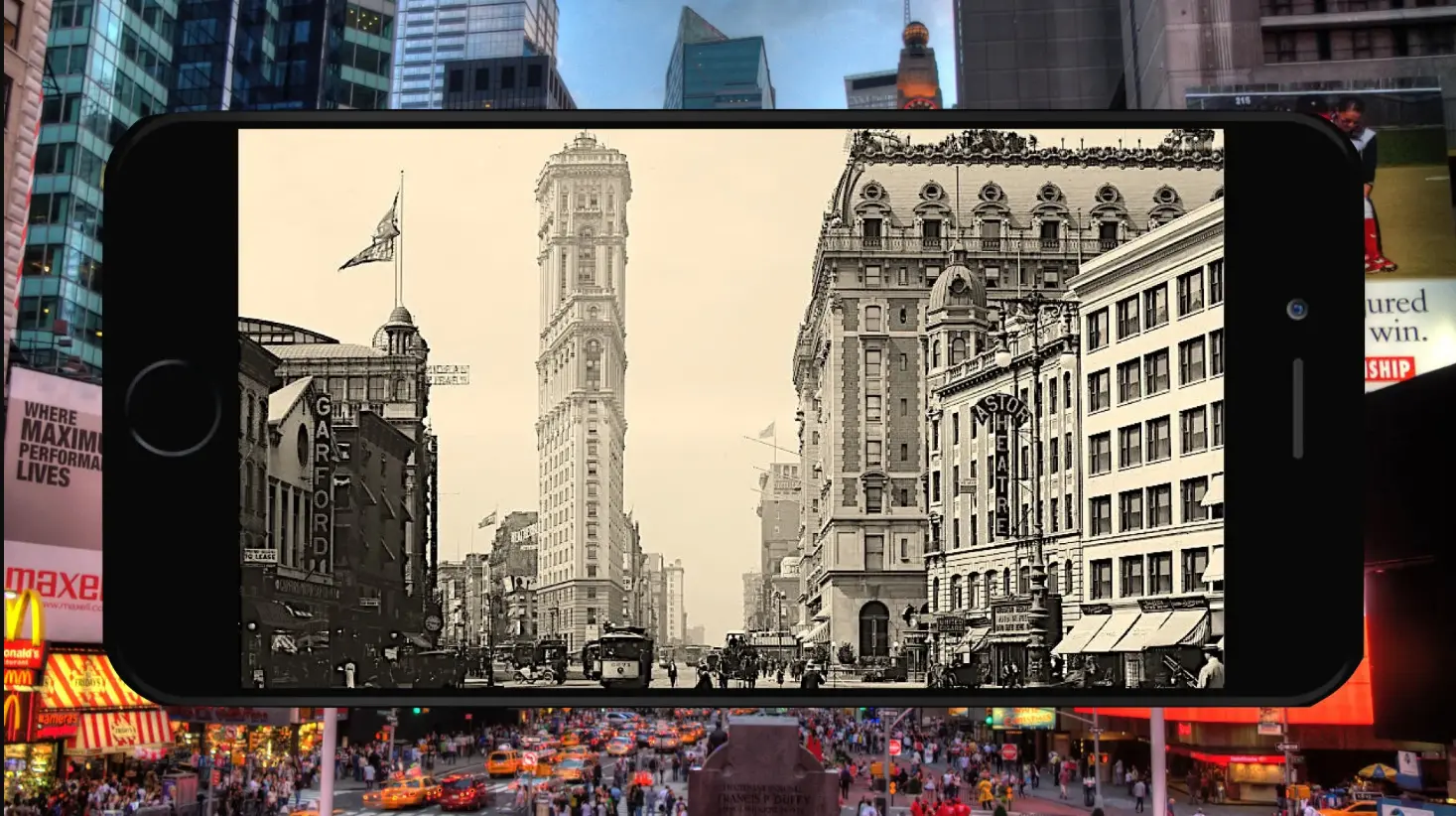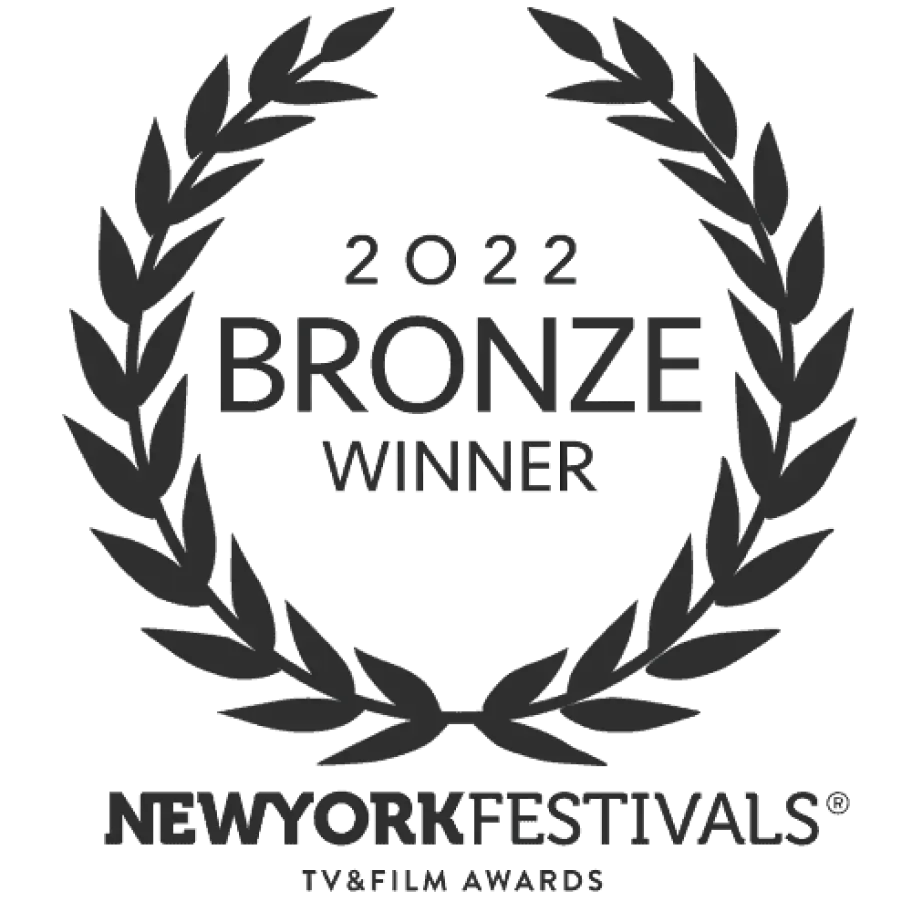Look Before You Go! How Augmented Reality in Travel Makes Experiences Smarter!
Imagine exploring the ancient Roman ruins, but instead of just seeing walls and stones, your augmented reality travel app recreates the Colosseum as it was hundreds of years ago, complete with gladiators and rejoicing spectators. Imagine, for example, traversing a foreign city where street signs are instantly translated into your native tongue. The use of augmented reality in travel and tourism has arrived and is reforming how we see the world.
Businesses in the travel and hospitality sectors use augmented reality (AR) to improve customer experience, increase engagement, and raise income through everything from immersive museum experiences to interactive AR travel guides. However, what is the impact, and how does it operate exactly?
Let us examine the practical uses, advantages, difficulties, and prospects of augmented reality in the travel industry.
What is Augmented Reality in Travel?
Augmented reality (AR) in travel represents the practice of applying virtual digital elements onto real-world contexts using smartphones or headsets such as AR Glasses. Real-world travel experiences improve through augmented reality implementation that adds educational and navigational, and entertainment features to actual travel moments rather than virtual reality creation of totally synthetic environments.
Data-Driven Perspectives: The Development of Augmented Reality in Travel
The travel industry for AR and VR technologies will expand to $304.4 billion by 2024, according to Statista statistics.
Hospitality Net reported that 73 percent of tourists look for technology-immersive destinations.
ResearchAndMarkets predicts the worldwide tourism AR applications market will maintain growth at a 13.2% compound annual growth rate between 2023 and 2030.
How Can AR Enhance Travel Experiences?
Absorbing digital content with physical space makes augmented reality transform current travel patterns. Augmented Reality creates fluid, seamless, and interactive travel moments that help tourists explore both new streets and historic eras in their journeys. Here, we examine how augmented reality (AR) improves travel at every level, from pre-trip preparation to experiences while on the go.
1. AR Travel Guides: Explore Destinations Virtually
Massive stress occurs during travel preparation, especially when visiting unfamiliar destinations. Passengers can use AR travel guides to make better travel choices because these tools let them experience locations virtually before their trip begins.
How it Works:
AR-enabled travel apps provide users with a 360-degree sample of what to expect by delivering virtual tours of hotels, attractions, and city streets.
Users can obtain historical context, interesting facts, and local recommendations by using the camera on their smartphone to scan a landmark or a location.
Holograms, 3D models, and animations are used in interactive augmented-reality tour guides to make stories come to life.
Example:
Visitors can view real-time historical reconstructions of buildings as they were in the past by scanning landmarks with Google Lens and AR City.
Before making a reservation, guests may examine hotel rooms with Expedia’s augmented reality technology.
Impact:
According to Hospitality Net, 71% of tourists found AR-enhanced previews helpful while making travel plans.
According to Think with Google, virtual exploration boosts engagement and booking conversion rates by 40%.
2. AR for Navigation & Wayfinding
It can be difficult for visitors from foreign cities to navigate the streets and public transportation networks. By superimposing digital directions onto actual environments, augmented reality navigation apps reduce this stress.
How it Operates:
AR-powered walking navigation directs a traveler to their destination by projecting virtual arrows and signs onto their smartphone screen.
By giving detailed directions to check-in counters, gates, or stores, augmented reality indoor navigation helps passengers in train stations, airports, and shopping centers.
Real-time train, bus, or metro schedules are provided via public transportation apps that include augmented reality.
Example:
Instead of depending on static maps, Google Maps AR Live View offers pedestrians real-time, AR-based navigation to help them traverse congested streets.
The augmented reality software at Gatwick Airport makes it simple for passengers to find the baggage claim and departure gates.
Impact:
According to Statista, AR navigation makes travel easier by reducing traveler confusion by 36%.
Using AR guidance reduces anxiety in foreign cities, according to 67% of passengers (Skift).
3. Using AR to Entertain Guests
Flights, train travel, and hotel stays may all be made more entertaining with AR, which adds an interactive layer of entertainment to long travel trips.
How It Works:
During lengthy train trips or flights, people are kept interested via AR games and interactive experiences.
Through augmented reality (AR), hotels turn their guest experience into a game by providing them with digital concierge support, site exploration features, and discounts.
The entertaining AR storytelling enables visitors to gain knowledge about local history.
Example:
Augmented reality (AR) allows Emirates Airlines passengers to interact with three-dimensional objects and experience digital tourist journeys of their destination through their in-flight entertainment system.
Hotel chain Marriott Hotels presented consumers with an AR room exploration feature that let guests scan hotel items to get information about hotel facilities and general services.
Impact:
According to Forbes, 80% of tourists favor lodgings with interactive augmented reality entertainment options.
According to Skift, guest satisfaction rates rise by 25% when hotel experiences are enhanced by augmented reality.
4. Interactive and Immersive Experiences
Augmented reality displays computer-generated information on top of physical environments, enriching visitor experiences when seeing architectural landmarks worldwide.
How it Works:
Using their phone, tourists may scan historical sites or sculptures to experience animated recreations, historical context, and narrative components.
Users who download specific augmented reality applications can use them to view historical visuals of places from previous decades.
Museums, together with cultural organizations, use AR-powered holograms and animations along with audio narrations to improve their exhibits.
Example:
The Berlin Wall AR app overlays historical video on the wall’s remnants to recreate the wall as it was before it collapsed.
Pompeii AR Guide’s AR-generated streets and structures allow visitors to see ancient Rome as it was.
Impact:
According to Think with Google, 63% of millennial tourists favor locations that allow for augmented reality interactions.
According to the American Alliance of Museums, museums that adopt AR experience a 22% boost in visitor engagement.
With AR-powered experiences, take a step into the future! A Top Augmented Reality Development Company, EuphoriaXR, offers top-notch AR solutions that transform brand interactions, storytelling, and education.
5. AR for Museums & Cultural Heritage Sites
AR is being used by museums and other cultural institutions to bring history to life through digital overlays and interactive storytelling.
How It Operates:
AR-enabled displays let visitors engage with museum artifacts outside of glass cases by providing 3D renderings of the artifacts.
Augmented storytelling is incorporated into museums, allowing visitors to watch historical individuals use holograms to recount events.
Example:
Visitors can discover secret levels of the Mona Lisa and other well-known pieces of art with the Louvre Museum’s AR Guide.
Historical paintings at Singapore’s National Museum are brought to life through augmented reality.
Impact:
According to the American Alliance of Museums, visitor interaction with AR-powered exhibitions increased by 22%.
According to Statista, 72% of museum visitors favor AR-guided encounters over conventional text-based explanations.
6. AR Language Translation and Communication
Travelers frequently encounter language obstacles. By translating foreign languages into the user’s local tongue, augmented reality translation systems facilitate smooth real-time communication.
How it Works:
When travelers use the camera on their smartphone to scan menus, signs, or papers, the text is instantly translated into their native tongue.
Certain Augmented Reality Applications provide real-time subtitle overlays for multilingual talks.
Example:
When you scan text in a foreign language, Google Translate AR Mode instantaneously translates it.
Waygo makes it easy to read signage and place food orders by offering real-time translations for Asian languages.
Impact:
According to Travel Weekly, 85% of tourists claim that using augmented reality translation apps boosts their confidence when visiting other nations.
Communication difficulties are reduced by 40% with AR-powered language tools (Pew Research).
7. Personalized Recommendations and Trip Planning
By recommending unique itineraries, attractions, and dining alternatives based on user preferences, augmented reality technology personalizes travel experiences.
How it Works:
By using an augmented reality application to scan their surroundings, users can find hidden gems, eateries, and monuments in the area.
AR-powered suggestions are updated in real time according to the user’s location and preferences.
Example:
Yelp’s Monocle AR feature superimposes reviews, ratings, and suggestions for restaurants right on the street view.
Impact:
According to Adobe Digital Trends, AR-driven customization boosts booking conversion rates by 27%.
8. AR for Excursions and attractions
Tourists benefit substantially from excursions which include both led city walks and thrilling outdoor activities such as hiking along with safaris, and snorkeling. The user experience improves thanks to augmented reality technology, which enables gamification features and interactive characteristics and provides real-time information.
How it Works:
When visiting well-known locations or natural parks, AR superimposes historical details, 3D reconstructions, or information on wildlife.
City tours and theme parks become more involved through gamification through augmented reality-based scavenger hunts.
Adventures in hiking, diving, and simulated skydiving utilize AR technology to elevate their offered experiences.
Example:
Players of the Jurassic World Alive AR Game experience the chance to see dinosaurs living freely in their natural park environments.
The augmented reality app for Yellowstone National Park allows users to see extinct species and prehistoric environments.
Children may engage with digital LEGO characters all over the theme park thanks to LEGOLAND’s AR-enhanced attractions.
Impact:
Interactive augmented reality components on trips result in a 35% boost in visitor engagement (Harvard Business Review).
Customer retention rates are twice as high for AR-based attractions (Skift).
9. AR in Transportation and Airport Experiences
For overseas tourists in particular, navigating airports and public transit may be a stressful experience. Real-time flight updates, baggage tracking, and wayfinding are all made easier by AR.
How it Operates:
Using digital arrows, AR Apps direct users to gates, check-in counters, baggage claim areas, and lounges.
Travelers may find their bags in real time with certain airlines’ AR-powered baggage tracking.
Example:
Passengers may easily navigate the terminal at Gatwick Airport with the aid of the AR Wayfinding App.
The augmented reality software from Deutsche Bahn offers real-time travel assistance and train timetable updates.
Impact:
According to Airports Council International, using AR-based navigation reduces airport stress by 45%.
10. Enhanced cultural experiences
Cultural immersion stands as a principal factor that attracts people to travel. Augmented reality (AR) allows people to engage deeply through its combination of interactive learning with digital storytelling and immediate explanations used to bridge cultural gaps.
How it Operates:
AR offers historical context and cultural relevance when tourists scan monuments, artworks, or traditional goods.
By using AI-generated storytelling to narrate events in their voices, augmented reality apps give historical figures life.
Before taking part, visitors can watch 3D animations of local celebrations and customs thanks to augmented reality.
Example:
By using the Japanese Edo AR Tour, visitors can digitally experience the original Edo-period buildings that once existed in Tokyo.
Through its restorations, Rome Reborn AR lets users view the complete Original Roman streetscape and landmarks of temples and marketplaces that existed two thousand years ago.
Users can discover traditional attire, food, and dances from other cultures with Google Arts & Culture augmented reality experiences.
Impact:
According to 72% of passengers, cultural awareness is an essential component of travel, and augmented reality greatly improves this process (TravelPulse).
According to Statista, museums that use augmented reality to explain cultural assets claim a 30% increase in visitor engagement.
Is your company taking advantage of augmented reality? If not, this is the moment!
How Can Augmented Reality Improve Customer Satisfaction in Travel and Tourism?
1. Using AR to Provide Personalized Travel Experiences
Travellers vary from each other in expectation level, their tastes, and favored activities. Destination experiences augmented by augmented reality allow travelers to obtain personal recommendations while receiving immediate, interactive updates that enhance their adventures.
How It Operates:
AR travel apps look at user preferences and recommend restaurants, activities, attractions, and places to visit that fit their interests.
Real-time augmented reality overlays with personalized suggestions for neighboring locations can be obtained by travelers scanning their environment.
Concierge services driven by augmented reality are used by hotels and resorts to give virtual tours, customized itineraries, and personalized discounts based on visitor preferences.
Before making a reservation, clients can examine 3D previews of hotel rooms, excursions, and airplane seat options on AR-enabled travel booking sites.
Example:
Marriott International deploys augmented reality (AR) technology to give users customized digital concierge solutions through which they receive personalized recommendations relying on past behavior and preferences.
Users who scan a street with their smartphones enable Yelp’s Monocle AR feature to display restaurant evaluations along with ratings and promotional deals.
Travelers may quickly access translated menus, descriptions of attractions, and insider information based on their location with Google Lens in trip mode.
Impact on Customer Satisfaction:
✔ Improves traveler engagement: Boosts passenger engagement by 42% through personalized augmented reality interactions (Adobe Digital Trends).
✔ Lessens choice fatigue: 60% of travelers select experiences more quickly thanks to AR-powered recommendations (Think with Google).
✔ Increases conversion rates: According to McKinsey, AR-driven customization raises booking conversions by 27%.
2. Improving Customer Communication and Collaboration Through AR
Tourism industry management encounters substantial problems in maintaining effective communication between companies and tourists, particularly affected by language barriers and service-related communication needs, and tour guide interactions. AR provides travel comfort through its ability to enhance both customer service and team efforts and deliver continuous real-time assistance.
How It Works:
Travelers who use translation applications with AR technology can understand menus and signage together with information boards through their default language, which prevents communication obstacles.
The combination of interactive AR overlays and AR chatbots enables hotels as well as airlines to assist travelers with real-time information about check-ins and reservations and address any issues through automated systems.
Hotel and airport customer service kiosks with AR-powered interactive guidance functions decrease the requirement for human service operators in tourist locations.
By providing on-demand historical, cultural, and local knowledge, augmented reality (AR)- assisted virtual tour guides enable travelers to experience locations without depending on human guides.
Example:
Users can instantaneously translate menus and signage in foreign languages into their language by scanning them in Google Translate’s augmented reality mode.
Lufthansa Airlines provides passengers with an augmented reality technology allowing them to check their luggage dimensions through their smartphone before heading to the airport.
Hotel guests can access hotel services effortlessly through the Hilton AR concierge app, where they will find enhanced room service menus and interactive hotel maps.
Impact on Customer Satisfaction:
✔ Removes communication barriers—AR translation tools increase passenger confidence by 85% (Travel Weekly), which has an impact on customer satisfaction.
✔ Shortens wait times for services—AR-powered self-service alternatives cut wait times in airports and hotels by 35% (Forbes).
✔ Improves accessibility and convenience—AR-based kiosks and guides increase visitor satisfaction by 30% (Skift).
How Can Augmented Reality Increase Revenue in Travel and Tourism?
1. Enhanced Virtual Tours: Turning Interest into Bookings
The main hurdle in the travel sector stems from customers facing unclear situations. People remain reluctant to book flights or hotel rooms, or tours, since they lack information about what they will encounter. Purchase decisions are easier for potential tourists through augmented reality (AR)-powered virtual tours because they allow customers to inspect hotel rooms together with tourist destinations, as well as excursions ahead of purchase transactions. Customers can explore 3D virtual representations of destinations instead of static photographs, which gives them the confidence to make a reservation.
Customers may digitally tour a hotel room with Expedia’s augmented reality booking feature, increasing direct bookings by 18%. In a similar vein, last-minute cancellations have been greatly decreased by Hilton’s AR-powered room previews. Virtual tours provide a sense of anticipation that results in actual bookings, as seen by the 30% increase in conversion rates reported by travel firms who use interactive destination previews.
2. Virtual Shopping Experiences: Driving Sales in Airports and Destinations
Travelers enjoy shopping, and augmented reality has made it even more engaging. Several airports, high-end retailers, and neighborhood shops are utilizing augmented reality shopping applications to let customers virtually try on items before making a purchase. Augmented reality successfully adds virtual products to physical surroundings so customers can make better purchases in the industries of clothing, accessories, and collectibles.
The application of augmented reality (AR) fitting rooms by major retail outlets found in popular tourist destinations and airports within Changi, Singapore, allows travelers to virtually examine how eyeglasses, jewelry, and clothes would fit them without physical requirements. In-flight purchases at Lufthansa rose by 22% because the airline introduced its augmented reality shopping catalog within its in-flight entertainment system. The streamlined shopping experience raises both customer engagement and drives them to make sudden purchase decisions.
3. Augmented Advertising: Boosting Engagement and Brand Awareness
While traditional travel advertising struggles with engagement, AR alters the game by making advertisements interactive. AR-powered commercials allow prospective buyers to experience places before making a reservation, in contrast to static posters or passive banner ads. Location-based augmented reality advertisements are being used by travel companies and airlines, allowing travelers to scan posters to access virtual previews of destinations or to get special savings on hotel stays and airline tickets.
Users may view a 3D representation of their prospective hotel room straight from their cellphones as part of Marriott’s augmented reality hotel booking promotion. Engagement increased by 47% as a result of the campaign, and direct reservations significantly increased as well. In a similar vein, conversion rates increased by 33% thanks to Airbnb’s interactive AR advertisements. The combination of AR in advertisements delivers both an interactive brand experience that raises conversion rates while promoting more engaging promotional content.
4. Gamification in Travel & Tourism: Encouraging Exploration and Spending
The transformation of cities and theme parks together with historical sites into interactive spaces through augmented reality gamification creates playgrounds to appeal to travelers’ instinct to explore. Tourism boards, together with commercial companies, use augmented reality treasure hunts along with interactive city tours combined with incentive schemes to attract tourists who will then increase their spending during visits.
Disneyland’s AR-powered treasure hunt increased revenue by 23% by enabling visitors to unlock exclusive products and dining discounts through in-park challenges. The cultural phenomenon Pokémon Go proved a major force in boosting tourism because it brought 40% more people to fundamental locations. Scavenger hunts based on augmented reality have become increasingly widespread throughout various cities, allowing guests to obtain savings opportunities at nearby businesses.
5. AR as a Tool to Boost Sales and Conversion:
By assisting consumers in making smarter selections, AR lowers uncertainty and increases conversion rates. By showcasing premium room upgrades through augmented reality, hotels help guests see why choosing a suite is preferable to a regular room. Similarly, tour companies include augmented reality storytelling on their websites so that customers can preview guided tours before making a reservation.
Suite reservations have increased by 20% after luxury cruise operators began utilizing AR-driven room previews. Restaurant customers seeking to purchase food items have experienced a 25% increase when using augmented reality menu features that display three-dimensional images of dishes. Customers become more confident when they have early interactions with products before buying, while fewer reservation cancellations drive straight increases in revenue.
6. Enhanced in-Room Shopping and E-commerce:
AR is being used by hotels and resorts to transform visitor rooms into areas that generate income. AR enables visitors to shop straight from their lodgings, eliminating the need for conventional room service or concierge upsells.
Marriott introduced an AR-powered purchasing experience that allowed visitors to scan and buy the amenities, furnishings, and décor in their rooms online. AR can enhance expenditure without visitors having to leave their rooms, as demonstrated by the 18% rise in in-room purchasing that the feature brought about.
Similarly, resorts deploy AR-powered interactive catalogs that allow visitors to easily schedule local tours, spa treatments, and special dining experiences. Higher per-guest spending and higher overall hotel revenue are the outcomes of this smooth blending of experiences and shopping.
7. Upselling Through Augmented Reality:
Upgrade opportunities through augmented reality (AR) enable customers in the tourism industry to view added features and try them before buying. Through augmented reality (AR), businesses show how elevated experiences look in the current time instead of marketing premium services separately.
Passengers may now see first-class seating options with more room and upscale amenities thanks to Virgin Atlantic’s AR seat preview technology. Sales of premium seats increased by 14% as a result. In a similar vein, upscale resorts utilize augmented reality to showcase their private villas, first-rate spa services, and unique trip packages, which increases luxury reservations by 20%.
Because customers can see the added value for themselves rather than having to rely on a salesperson’s pitch, upselling using AR is more compelling and less invasive.
8. Interactive room service: Increasing In-Hotel Spending:
To make in-room dining and service reservations more interesting, hotels are implementing augmented reality menus and interactive service alternatives. Before placing an order, visitors can see 3D representations of the meals on their table in place of conventional paper menus, which makes the selection process more alluring.
Food orders placed in-room at Hyatt climbed by 21% thanks to its AR-powered dining experience. Hilton launched an augmented reality concierge service that lets visitors scan items in their rooms to find out about hotel amenities, nearby sights, and special dining offers. This method facilitates more seamless and pleasurable visitor encounters while encouraging higher spending.
9. Promote off-peak activities to Boost Revenue During Low Seasons:
Maintaining revenue during off-peak seasons is one of the key issues facing tourism attractions. Through interactive previews, virtual simulations, and special AR-based incentives, AR helps increase interest in seasonal attractions.
By enabling users to view real-time aurora borealis previews via an augmented reality app, Norway’s tourism authority leveraged augmented reality to advertise Northern Lights trips. This tactic increased off-season reservations by 25%. In a similar way, ski areas employ augmented reality to display snow predictions and forthcoming winter activities to promote reservations before the busiest time of year.
Through augmented reality technology, businesses can maintain financial stability when visitor numbers decrease because these tools enhance awareness, along with audience participation for seasonal activities.
How Can You Benefit from AR in the Hospitality Industry?
With augmented reality (AR) taking over the hotel sector, it helps teach staff new skills while optimizing both business procedures and customer interactions.
1. AR in Hotels and Resorts
AR is used by hotels and resorts to increase reservations and visitor interaction. AR Maps assist visitors in navigating hotel amenities, while virtual room tours provide passengers with an interactive preview before booking. AR smart mirrors that show recommendations, local attractions, and weather updates are available at certain hotels. The use of augmented reality previews by Marriott and Hilton has increased consumer spending and engagement.
2. Training Hotel Staff Using AR
AR speeds up and improves staff training. Workers can model real-world situations, such as front desk conversations and housekeeping sets. By assisting employees in learning languages, multilingual augmented reality solutions enhance customer service. IHG Hotels used AR to save training time by 40%, which improved service quality and decreased costs.
3. Improving Guest Services With AR in Hotels
With AR-powered concierge apps, hotels improve guest services by enabling visitors to scan QR codes for room service menus, area recommendations, and hotel amenities. In-room expenditure and guest satisfaction have both improved thanks to Hyatt’s AR concierge technology.
The Benefits of Augmented Reality in Travel
1. Enhanced Visitor Engagement
Augmented reality (AR) enables the transformation of travel into immersive experiences through gamification, self-guided tours, and 3D reconstructions to sustain tourist interest.
2. Increased Revenue Opportunities
Bookings and in-destination spending are increased by hotels, airlines, and tour operators using AR for virtual previews, upselling, and AR-driven buying.
3. Better Customer Insights and Data Collection
AR collects user behavior data, which enables companies to enhance service quality, service delivery efficiency, and optimize marketing programs.
4. Improved Destination Marketing
Real-time site previews alongside AR-powered virtual tours and interactive advertisements significantly improve brand visibility, which leads to more tourist attractions.
Challenges and Limitations of Augmented Reality in Travel
1. Technological Barriers and Infrastructure Requirements
Adoption of AR is challenging in places with antiquated infrastructure since it demands high-speed internet and sophisticated hardware.
2. Privacy and Data Security Concerns
Because AR gathers location and personal information, issues like security and privacy compliance can arise.
3. Balancing authenticity and digital enhancement
Striking the right equilibrium between technology and authenticity matters most because abundant AR usage diminishes authentic contact with the real world.
4. Environmental and Social Impacts
AR-powered tourism requires responsible implementation toward sustainable growth because it leads to increased quantities of visitors stressing historical sites.
Case Studies of Successful Implementations of Augmented Reality in Travel and Tourism
Google Maps and AR Navigation
By superimposing digital arrows and directions onto streets, Google Maps’ Live View AR facilitates real-time navigation and makes it easier for users to find their way around. This function improves pedestrian navigation and lessens confusion, making it especially helpful in new cities. For easier traveler movement, airports and other key travel hubs have already begun incorporating AR-powered navigation.
AR in The Metaverse
By enabling users to research locations, lodging options, and attractions in a completely digital environment before the trip, the Metaverse is transforming virtual tourism. Businesses like Decentraland and Meta provide augmented reality (AR)-enhanced virtual experiences that let tourists explore destinations, schedule virtual tours, and engage with attractions from a distance, all of which have an impact on actual travel choices.
AR Tour Guides and Travel Apps
By offering interactive historical data, cultural insights, and real-time translations while scanning locations, AR-powered travel apps like Google Lens and AR City revolutionize touring. To make tourism more engaging and instructive, museums and heritage sites are also using augmented reality (AR) to restore lost buildings or bring historical events to life.
Beacon Technology in Tourism
The location-based services and promotional content that hotels, airports, and tourist destinations provide their guests lie in Beacon-powered augmented reality technology. These beacons assist mobile devices in receiving real-time augmented reality alerts, such as promotional discounts, self-guided walking tours, and location directions. Malls alongside theme parks implement this technology for better direction services while generating higher tourist participation.
Interactive Hotel Elements
With features like interactive maps, AR concierge services, and AR mirrors that show area suggestions, weather updates, and hotel amenities, hotels are utilizing augmented reality to improve the visitor experience. By using augmented reality (AR) room previews, Marriott and Hilton have increased direct reservations by enabling prospective visitors to examine their lodgings before making a reservation.
Augmented Reality Tourist Destinations
To improve visitor experiences, several towns and attractions have fully embraced augmented reality. For instance, Tokyo’s Edo AR project digitally recreates historical places, while Pompeii’s AR tour lets tourists experience ancient ruins as they were. These AR-enhanced tourist destinations preserve cultural heritage while making history more interesting.
Best Practices When Using Augmented Reality in Travel and Tourism
Choose the Correct Audience: Create Augmented Reality Experiences that match the needs of tourists, along with those of vacationers who love historical sites and people conducting business at tourist hubs.
Keep it Simple: Make sure augmented reality features are simple to use and improve travel experiences without any problems.
Invest in High-Quality Content: Create investments for content with compelling stories since premium visual content enhances the power of AR experiences.
How to Get Started with AR in the Tourism Industry
Assess Business Needs: Business objectives should include the growth of reservations, customer interaction, and the delivery of better solutions.
Choose the Correct AR Platform: Businesses should select their AR platform based on user needs, between web applications, wearable devices, and mobile applications.
Form Strategic Alliances: To ensure a smooth deployment, work with developers, tour operators, and tourism boards.
Measure Success: User participation rates and ROI evaluation act as measurements for success through which AR product quality can be enhanced.
Do the current trends in AR capture your interest?
Augmented Reality: The Future of Tourism
AI-driven augmented reality technologies that merge cultural insights into real-time information with interactive navigation experiences will lead to a complete industry transformation of travel and tourism. The combination of voice guidance with AR translation and passenger assistive tools targets increased accessibility, which drives travel inclusivity, while 5G and IoT integration through AR creates better real-time updates, virtual tours, and smarter hotel services for enhanced experiences. The development of new income streams in the travel sector becomes possible through interactive advertisement platforms, virtual tourism-centered operations, and augmented reality premium tour guide offerings.
Closing Note!
The travel and tourism industry sees changes because augmented reality creates enchanting interactive experiences accessible to all while improving the perception of reality. The tourism industry and business attraction methods are being reshaped through AR technology because this technology enables better customer visits alongside new business income streams. The essential need for the adoption of AR technology will arise through technological development because companies need to stay competitive in the marketplace. Digital tourism has established AR as the future standard of technological advancement in the industry.
Frequently Asked Questions(FAQs)
By what mechanism, AR create better tourism experiences?
Travel enthusiasts experience improved travel comfort through augmented reality (AR) by utilizing its interactive features, real-time language assistance, immersive narrative elements, and virtual preview tools.
List the most beneficial AR travel applications.
Google Maps Live View, AR City, Google Lens, and Wikitude are well-known augmented reality travel apps that provide real-time recommendations, historical insights, and navigation.
Is AR expensive for tourism businesses?
Different levels of implementation affect the pricing, but every enterprise, from small to large, can make use of Web-Based AR and mobile apps solutions.
What advantages does AR technology offer for persons who need assistance while traveling?
Voice navigation, real-time sign language interpretation, and interactive instructions for visually impaired users make up a few ways that AR improves travel experiences for people with disabilities.
What’s the difference between AR and VR in travel?
The virtual reality approach produces complete imaginary worlds that often serve teaching and virtual tourism needs, yet AR integrates digital elements with real environments to boost user experiences.
Does augmented reality technology possess any applications in eco-tourism?
Augmented reality works as an ecotourism tool through its provision of virtual site previews as well as its reduced impact on natural landmarks, together with its support of environmental conservation education for visitors.
















